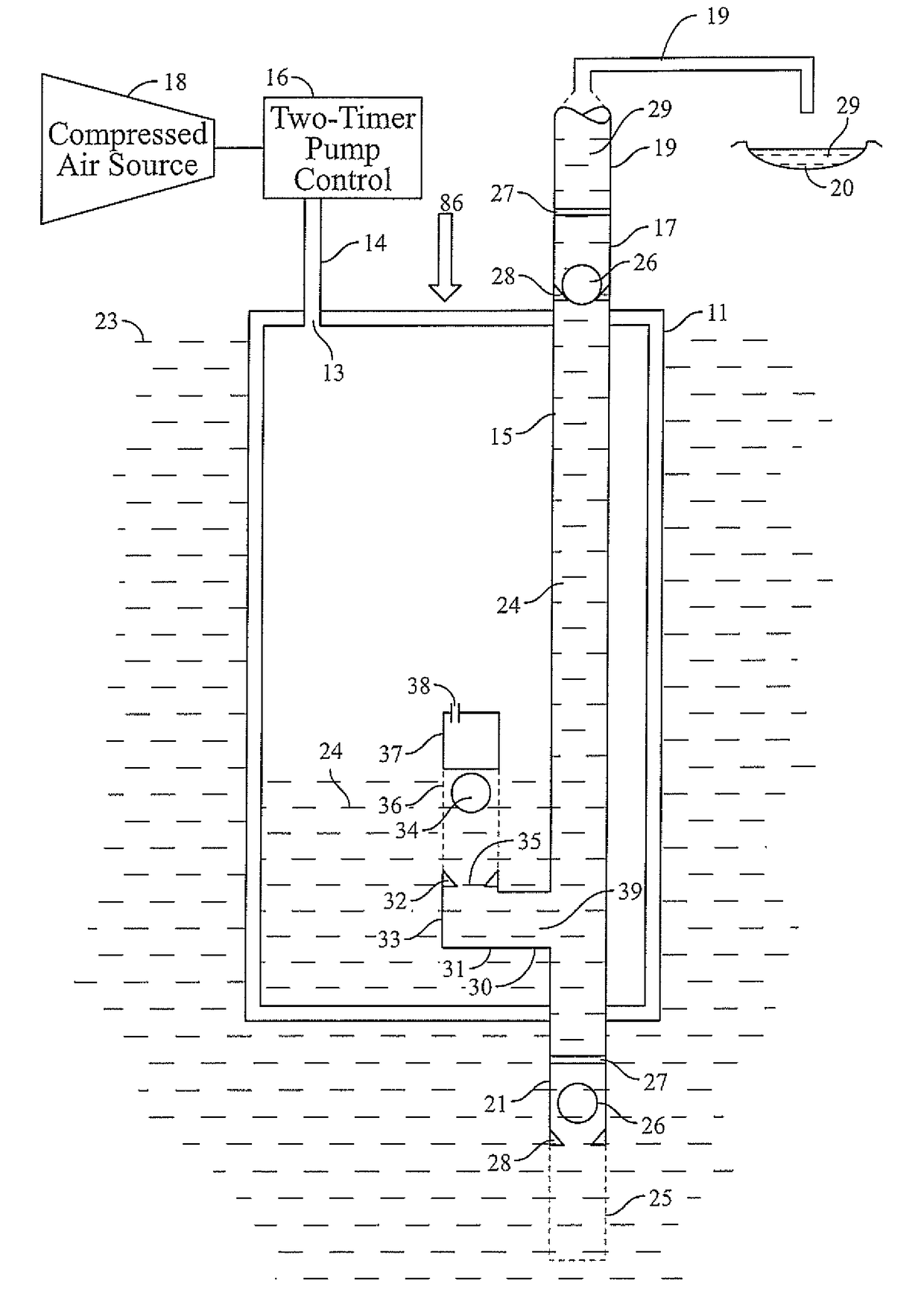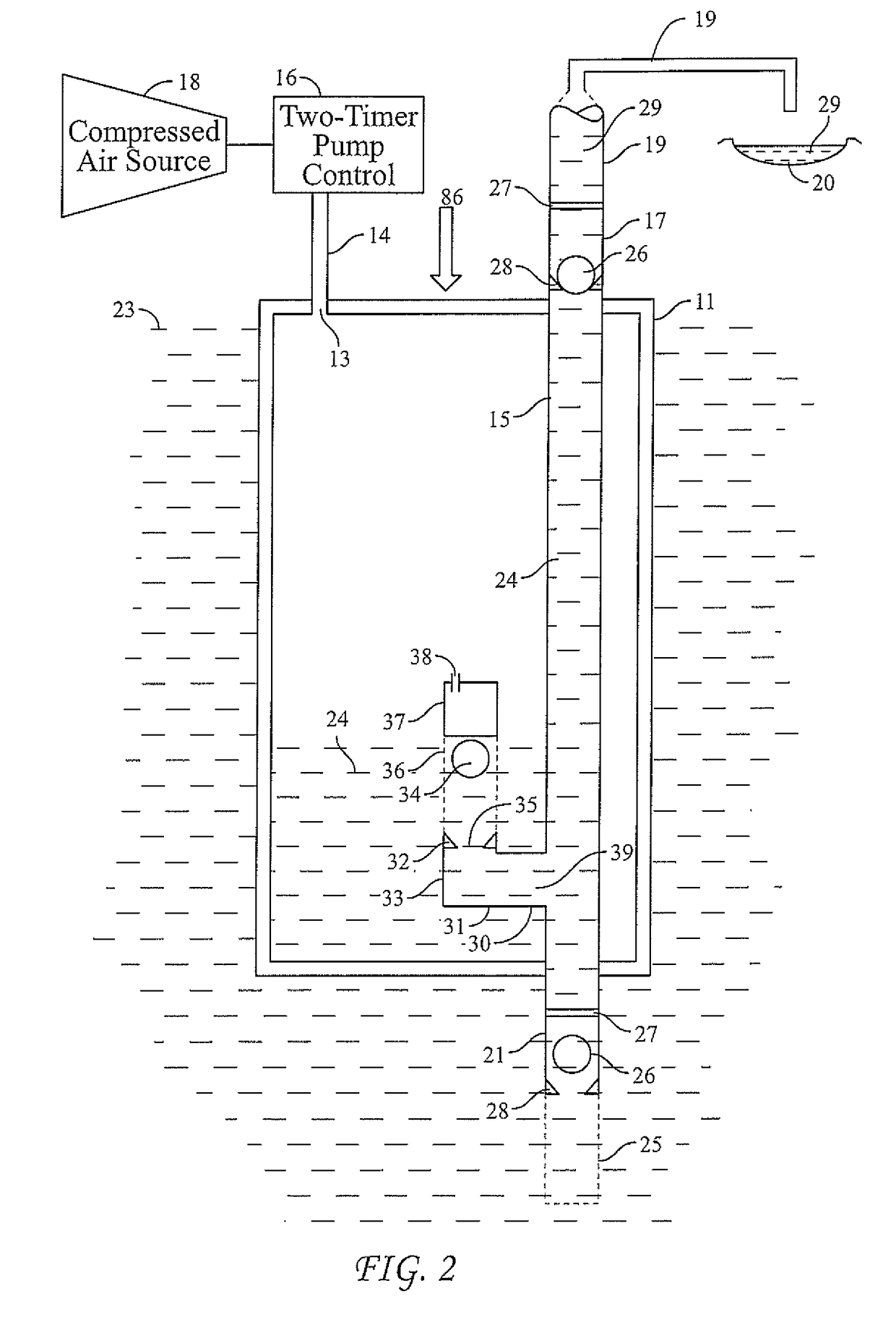Submersible pneumatic pump with air exclusion valve
- Summary
- Abstract
- Description
- Claims
- Application Information
AI Technical Summary
Benefits of technology
Problems solved by technology
Method used
Image
Examples
Embodiment Construction
[0031]FIG. 1—Prior Art—Bottom-Loading Submersible Pneumatic Canister Pump
[0032]FIG. 1 shows a typical prior-art pneumatic submersible canister pump currently used in many industries; prior art pneumatic submersible canister pump 12 is submerged in exterior liquid 23 to be pumped. It consists of a sealed pump casing 11 with an upper and lower end, an interior and exterior and opening 13 for compressed air to enter and exhaust air to exit casing 11. An inlet check valve 21 allows exterior liquid 23 to enter casing 11, but does not allow interior liquid to be discharged 24 to exit. A discharge check valve 17 allows interior liquid 24 to exit casing 11, but does not allow discharged liquid 29 to enter. A discharge pipe 15 extends from near the bottom of casing 11 up through the top of casing 11 with discharge check valve 17 attached at the upper end. Liquid discharge hose 19 carries discharged liquid 29 from pump casing 11 to a discharge point, such as a liquid holding pond 20. A two-ti...
PUM
 Login to View More
Login to View More Abstract
Description
Claims
Application Information
 Login to View More
Login to View More - Generate Ideas
- Intellectual Property
- Life Sciences
- Materials
- Tech Scout
- Unparalleled Data Quality
- Higher Quality Content
- 60% Fewer Hallucinations
Browse by: Latest US Patents, China's latest patents, Technical Efficacy Thesaurus, Application Domain, Technology Topic, Popular Technical Reports.
© 2025 PatSnap. All rights reserved.Legal|Privacy policy|Modern Slavery Act Transparency Statement|Sitemap|About US| Contact US: help@patsnap.com



